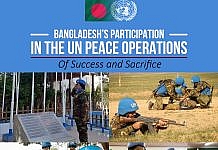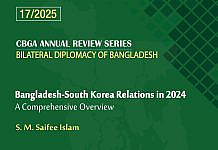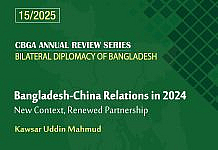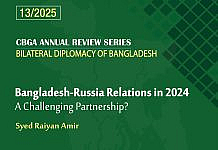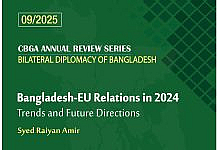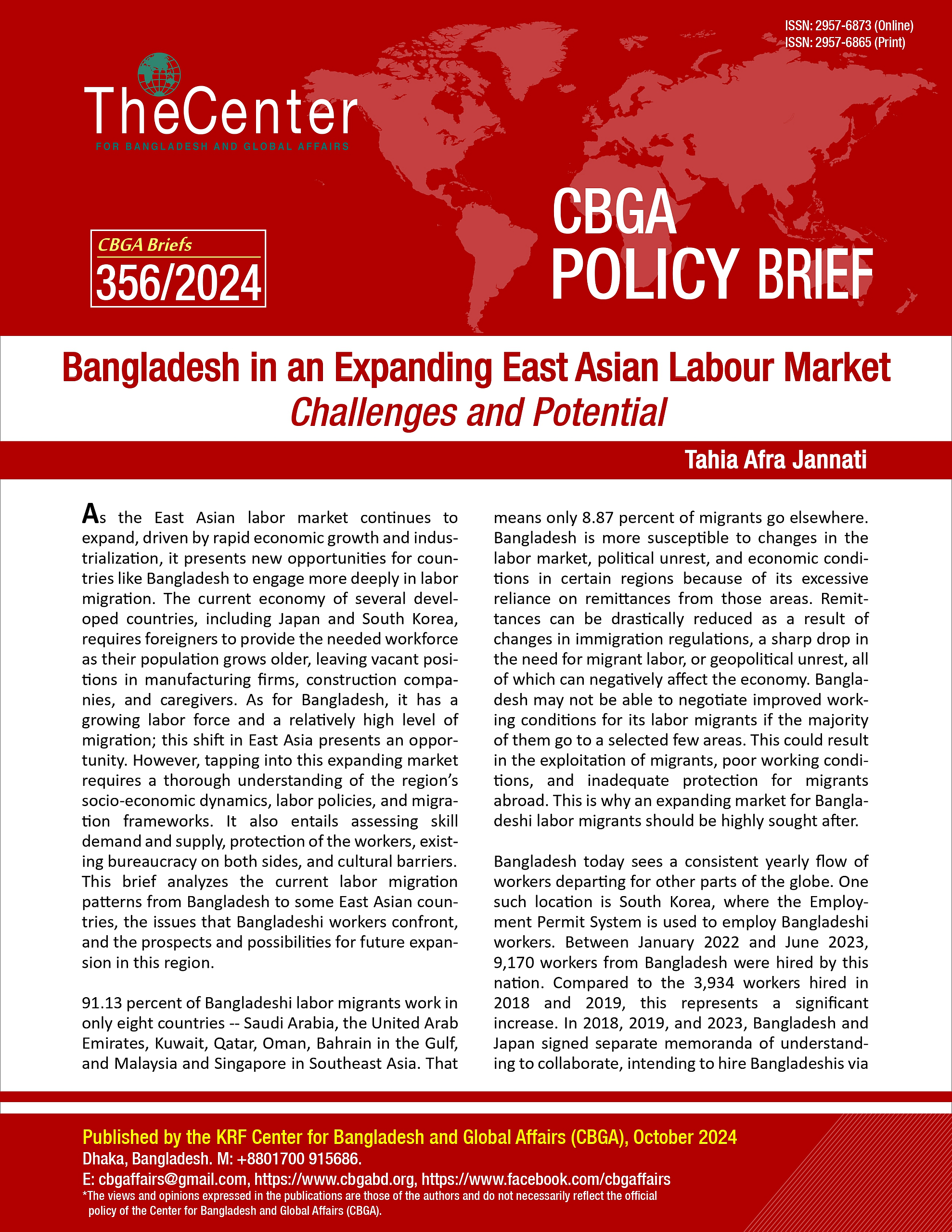
As the East Asian labor market continues to expand, driven by rapid economic growth and industrialization, it presents new opportunities for countries like Bangladesh to engage more deeply in labor migration. The current economy of several developed countries, including Japan and South Korea, requires foreigners to provide the needed workforce as their population grows older, leaving vacant positions in manufacturing firms, construction companies, and caregivers. As for Bangladesh, it has a growing labor force and a relatively high level of migration; this shift in East Asia presents an opportunity. However, tapping into this expanding market requires a thorough understanding of the region’s socio-economic dynamics, labor policies, and migration frameworks. It also entails assessing skill demand and supply, protection of the workers, existing bureaucracy on both sides, and cultural barriers. This brief analyzes the current labor migration patterns from Bangladesh to some East Asian countries, the issues that Bangladeshi workers confront, and the prospects and possibilities for future expansion in this region.
91.13 percent of Bangladeshi labor migrants work in only eight countries — Saudi Arabia, the United Arab Emirates, Kuwait, Qatar, Oman, Bahrain in the Gulf, and Malaysia and Singapore in Southeast Asia. That means only 8.87 percent of migrants go elsewhere. Bangladesh is more susceptible to changes in the labor market, political unrest, and economic conditions in certain regions because of its excessive reliance on remittances from those areas. Remittances can be drastically reduced as a result of changes in immigration regulations, a sharp drop in the need for migrant labor, or geopolitical unrest, all of which can negatively affect the economy. Bangladesh may not be able to negotiate improved working conditions for its labor migrants if the majority of them go to a selected few areas. This could result in the exploitation of migrants, poor working conditions, and inadequate protection for migrants abroad. This is why an expanding market for Bangladeshi labor migrants should be highly sought after.
Bangladesh today sees a consistent yearly flow of workers departing for other parts of the globe. One such location is South Korea, where the Employment Permit System is used to employ Bangladeshi workers. Between January 2022 and June 2023, 9,170 workers from Bangladesh were hired by this nation. Compared to the 3,934 workers hired in 2018 and 2019, this represents a significant increase. In 2018, 2019, and 2023, Bangladesh and Japan signed separate memoranda of understanding to collaborate, intending to hire Bangladeshis via Japan’s “technical intern training” and “specified skilled worker” programs. There are also opportunities for Bangladeshis to work as professionals in Japan, such as professors, researchers, and engineers. Alongside BMET and state-owned Bangladesh Overseas Employment Services Ltd. (BOESL), roughly 70 private recruiting organizations are permitted to transfer migrants to Japan, as per a list from the expatriates’ welfare ministry. A plan to broaden the industries for the blue-collar skilled worker visa, which gives foreigners a way to permanent residency, was recently approved by the Japanese cabinet. A shrinking population and labor shortages in Japan are driving up demand for foreign workers, opening up new career chances for workers from Bangladesh.
South Korea is another market for labor migrants from Bangladesh. Bangladesh’s 13th-highest source of remittances is South Korea. In 2022, Bangladeshi “low and medium” skilled workers were admitted to South Korea in unprecedented numbers through the Employment Permit System (EPS) program. Under the EPS program, 28,697 Bangladeshi workers were brought to Korea between 2008 and 2022; this year, it is anticipated that between 100 and 120 expatriate workers will be deployed to Korea weekly. Following the implementation of new legislation by Bangladeshi authorities, South Korea has shown renewed interest in employing workers from Bangladesh. Due to the declining need for labor from companies in South Korea, labor migration is expected to drop. The largest-ever quota of 11,500 jobs for Bangladeshi workers has been announced by South Korea for 2024 and in the first eight months of the year, 1,978 Bangladeshis managed to secure employment in that nation. The East Asian country is a popular destination for Bangladeshi expats as they can earn a minimum of $1,420 monthly, the legally guaranteed minimum wage of South Korea, the Korean mission in Bangladesh said Monday.
The Labor Ministry of Hong Kong expressed interest in 2022 in employing more Bangladeshi women, potentially expanding the market. Currently, Hong Kong employs about 700-750 Bangladeshi women as migrant workers who work as female domestic helpers (FDHs). Working conditions in Hong Kong are better than the ones that have employed female workers from the country. However, to move as FDH, new workers must meet several requirements, including Cantonese language training and skills.
Taiwan first opened its borders to Southeast Asian migrant workers in 1989, formalizing recruitment in 1992 with the Employment Service Act. This led to the founding of the Taiwan International Workers’ Association (TIWA) in 1999 to advocate for migrant workers’ rights. TIWA played a key role in advocating for better working conditions for migrants and pressed for policies like the Household Service Act. In 2022, the government introduced a “semi-skilled” worker scheme, allowing long-term residency for some workers. Taiwan faces a growing demand for migrant labor, yet challenges persist in addressing class divisions, nationalism, and systemic labor exploitation. In 2004, Taiwan proposed recruiting 3,000 Bangladeshi workers annually for jobs in the construction, textile, and homecare sectors due to the increasing demand for cheap labor. However, Bangladesh has been cautious due to foreign policy complications, particularly its adherence to the One China policy, which complicates setting up an office in Taiwan to facilitate labor migration.
The labor market in East Asian countries is rapidly changing as a result of automation and the shifting from industrial-based to the service industry, as well as the rising demand for soft skills. The COVID-19 crisis has increased the focus of employers on the ability to adapt to change more than education and experience. However, the percentage of Bangladeshis going to the rich East Asian countries is still very low compared to other countries that accept migrant workers.
Strengthening Relations
Migrant workers contribute to the growth and development of their destination nations, while their countries of origin gain significantly from them. Migrant workers contribute to the growth and development of their receiving countries, while their countries of origin gain immensely from their remittances and skills. In the current age of globalization, migration may be defined as a process in which individuals from various origins, localities, cities, and states interact culturally, promoting people-to-people interactions. South Korea draws thousands of foreign, low-skilled workers, particularly from other South Asian nations, as its population ages fast. These encouraging figures attest to the potential reciprocal benefits of Bangladesh’s partnership with South Korea and Japan. Given the growing demand for migrant workers and the resulting employment prospects in the nation, Bangladesh would be wise to upskill more workers to have a more skilled expat labor force. Meanwhile, we must guarantee that appropriate policies are in place in to safeguard the safety and well-being of our workers.
Bangladesh’s labor market is extending beyond the Gulf and Southeast Asian countries. Middle Eastern countries primarily hire unskilled or low-skilled workers from Bangladesh, who receive a lesser salary compared to skilled workers from the Philippines, India, or China; therefore, the expansion beyond the Gulf has been long overdue. This is also a contributing factor to our decreasing remittance inflow, even though we are sending more workers to these nations. Furthermore, in the Gulf countries, Bangladesh migrants frequently witness acts of violence and abuse. A staggering number of female workers died or have been abused in these countries having faced dangerous living and working conditions. Bangladesh needs to reduce its overdependence on Gulf countries and find alternative destinations. Bangladesh must take the necessary steps to increase the current number of workers sent to expanding markets, as the number is still relatively low. The addition of skilled personnel should also foster competition among the labor-receiving nations. As a nation that exports labor, this will also strengthen our negotiating position and enable us to help Bangladeshi labor migrants receive higher pay and protection against mistreatment. Private recruiting firms ought to be part of the process to expand the labor migration and analyze new markets.
Since the labor market in East Asia is experiencing growth, Bangladesh has an increasing opportunity to boost its economy and the living standard of its workforce. Although the region has its own issues, such as difficult regulatory structures, language barriers, and issues of labor protection in the countries, Bangladesh may turn this opportunity into strength by improving skills development, government-to-government cooperation, and ensuring the rights of migrant workers. If Bangladesh can successfully respond to these challenges, it will be better placed to leverage the East Asian labor market which is not only important for the economy’s resilience but also for the enhancement of relations with major East Asian partners.
– Tahia Afra Jannati is a Research Intern at the KRF Center for Bangladesh and Global Affairs (CBGA).


